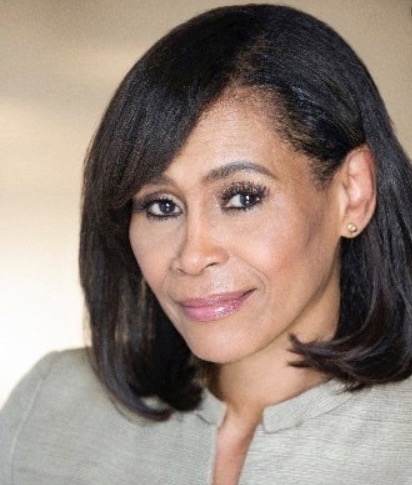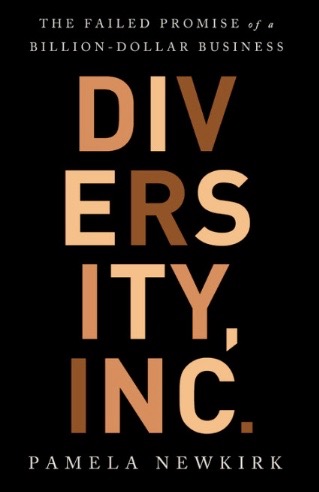by Roger Ali (September 7, 2020)
Diversity Inc: The Failed Promise of a Billion-Dollar Business, Pamela Newkirk, Bold Type Books, October 22, 2019, 272 pp., $33.59
Diversity Inc. by award-winning journalist Pamela Newkirk shines a bright light on the diversity industry, gives examples of successes and asks tough questions about what has been effective and why progress has been slow. She has devoted a significant portion of her life to journalism and higher education, both fields in which people of colour are radically underrepresented.
Newkirk describes in Diversity Inc, that despite decades of handwringing, costly investments, and uncomfortable conversations, progress in most elite American institutions has been negligible.
She presents a case for underrepresentation in university professors revealing non-Hispanic Whites, who comprise roughly 61 percent of the population, hold 82 percent of full-time professorships.
Hispanics and Blacks, who together encompass roughly 31 percent of the US population, are just 3 percent and 4 percent, respectively, of full-time professors. She states the field of journalism has not fared much better either. Four decades after efforts to reflect the proportion of minorities in the population by the year 2000, they, too, remain disproportionately White.
The question remains, but why after five decades of countless studies, public figures, and high-profile initiatives, is diversity lagging in most elite fields.
The current diversity conversation began in 1968, when President Lyndon Johnson’s National Advisory Commission on Civil Disorders recommended the inclusion of African Americans in institutions that had historically excluded them. Newkirk focuses on the three largest racial/ethnic minority groups: Hispanics/Latinx, African Americans/Blacks, and Asian Americans. She explores diversity across numerous fields but pays sustained attention to three fields: academia, Hollywood, and corporate America. Newkirk examines the data and converses with scores of people on the front line, leading change, to discover little progress toward racial diversity.
Newkirk describes the evidence is all around us. Too few acknowledge the resistance to racial inclusion in fields in which people of colour have historically been left out. She is struck by racial homogeneity in high profile events that blend arts, publishing, academia, and journalism.“
In Diversity Inc, Newkirk describes how, in a private dinner led by a school president of roughly seventy-five people, virtually all of them are White. The scene, replete with mostly Black uniformed servers lining the room, could have been from the 1950s South. These segregated settings reproduce workplaces that reflect homogeneous social spheres.
Startling facts show people of colour continue to be marginalized and stereotyped in Hollywood in a number of studies. The Hollywood Diversity Report 2018: Five Years of Progress and Missed Opportunities, a study conducted by UCLA found minorities disproportionately underrepresented in every category, with 13.9 percent in lead film roles, 12.6 percent as directors, 12.9 percent as digital scripted leads, 8.1 percent as film writers, and about 7 percent as creators of cable or broadcast scripted shows.
Surprisingly, the industry routinely undersells the relatively small number of films with diverse leads and casts. Instead, the report says the majority of films and television shows continue to have casts that are 10 percent minority or less. She cites Stacy L. Smith, a professor of film and the founding director of the Inclusion Initiative at USC’s Annenberg School for Communication and Journalism that the industry needs to rely on “evidence-based solutions” to address the trend of under-representation.
The big problem is the treatment of racial and ethnic minorities by the criminal justice system that trickles down to corporate America.
Newkirk shares Congress enacted mandatory sentencing for even first-time offenders while the Supreme Court, in a series of previous cases, upheld mandatory sentencing for drug offences, permitted racial profiling by police, and made it more difficult to prove racial bias in a variety of circumstances, including jury selection and arrests. The issue is made clear that exposure to extreme racial disparities, then, can lead people to support the very policies that produce those disparities, thus perpetuating a vicious cycle. A key message is institutions cannot hope to achieve true diversity without meaningful addressing the ways in which their own history so palpably informs the present.
An iconic American brand and among the Fortune 100 most enviable blue-chip companies the example of Coca-Cola’s journey to justice is revealing.
Over the next four years, the climate and composition of Coca-Cola’s workforce began to change. The company measured progress toward diversity in nine key areas and appointed two people of colour to the board. In the end, Coca-Cola had managed to create a model that not only transformed its workplace but that could also be replicated by other institutions.“
The Ware Report to the CEO Douglas Ivestor, written by Carl Ware, Coca Cola’s highest ranking African-Amercian, describes the company as a hostile environment for Black employees, who felt undervalued and demeaned. The report called for the company to address the lack of tolerance by the organization toward those from minority groups. Shockingly, Ware’s report remained private and its findings went largely unheeded. However, its rediscovery several years later would help substantiate claims made in a class action discrimination lawsuit that in 2000 resulted in a $192.5 million settlement, the largest for racial discrimination in legal history, with injunctive relief paid to roughly twenty-two hundred Black employees.
Football is considered America’s game. Another revealing publication by Mehri and Cochran highlights how racial diversity, a hallmark of most professional sports, given the large number of players of colour, is nearly excluded at the top. They also contended that the hand-full of Black coaches are held to a higher standard.

The NFL was conscious of its public image. As an indication of the seriousness with which the report was received, a diversity committee of team owners was formed, chaired by Dan Rooney, Pittsburgh Steelers President. He realized earlier on the responsibility for diversity lay with the owners, not with the league. The NHL owners unanimously agreed to adopt the rule, that became known as the Rooney Rule, that stipulates requiring teams to include at least one candidate of colour in every head coach search or face a possible fine. The Rule has been impactful and made it to other companies like Amazon, Facebook and Uber.
In Diversity Inc, Newkirk evaluates the rise in online courses, professional organizations, magazines, training sessions and national conferences, to the high-profile hiring of corporate leaders, the diversity industry is thriving, even if diversity itself is not. In an increasingly multiracial nation, Newkirk asks who will set the course for the nation’s identity and destiny?
Roger D. Ali is President and CEO of Niagara Health Foundation and Immediate Past Chair (volunteer) of the Association of Fundraising Professionals, Foundation for Philanthropy Canada. @FundraiseRoger
This review originally ran on Jan 23, 2020.
Other reviews by Roger Ali
Rising Tides: Part of the literary response to climate change (July 17, 2020)
Choosing what sparks joy (April 24, 2020)
How would you like to tweak your leadership style? (November 18, 2019)
